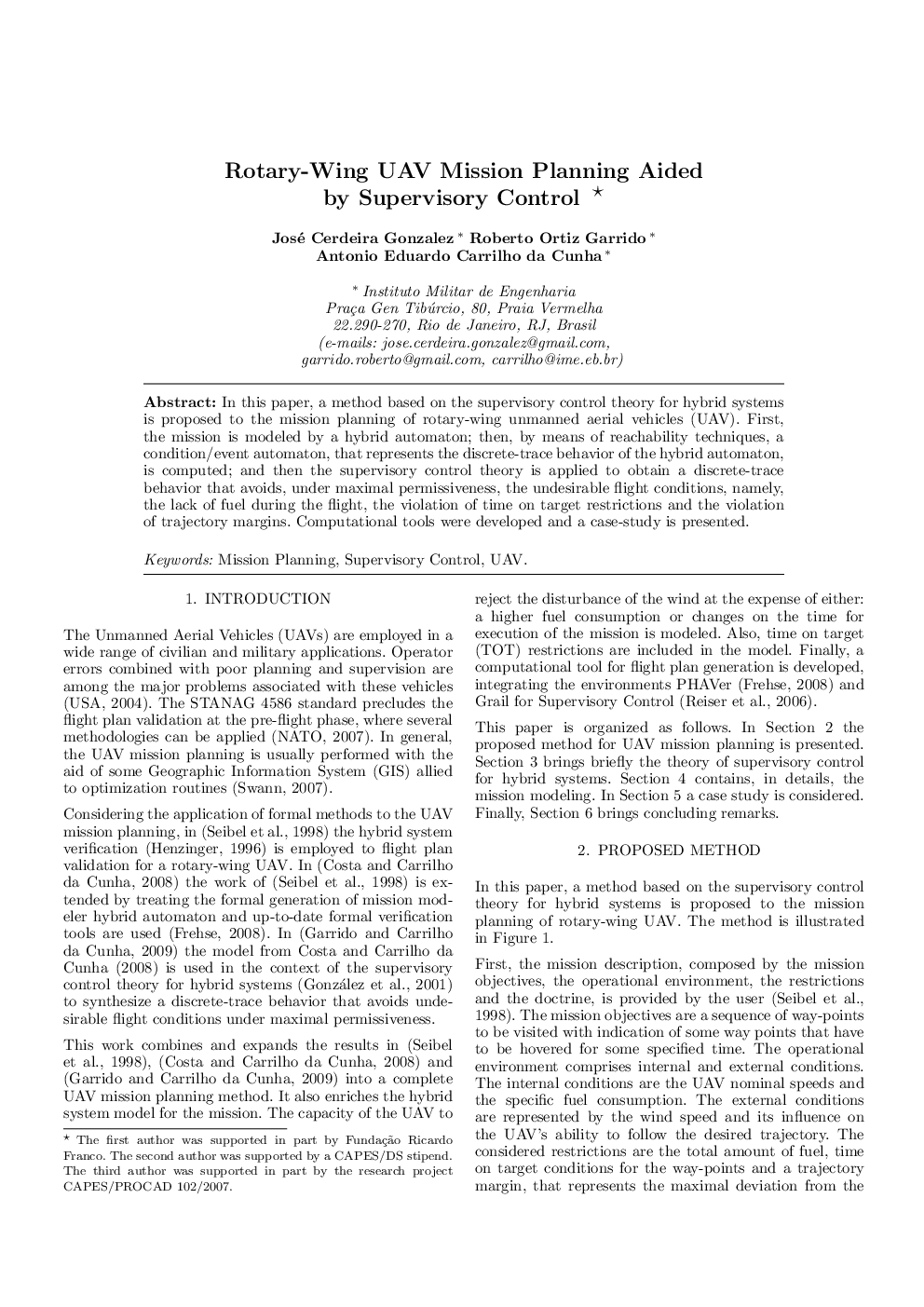| Article ID | Journal | Published Year | Pages | File Type |
|---|---|---|---|---|
| 716502 | IFAC Proceedings Volumes | 2010 | 7 Pages |
Abstract
In this paper, a method based on the supervisory control theory for hybrid systems is proposed to the mission planning of rotary-wing unmanned aerial vehicles (UAV). First, the mission is modeled by a hybrid automaton; then, by means of reachability techniques, a condition/event automaton, that represents the discrete-trace behavior of the hybrid automaton, is computed; and then the supervisory control theory is applied to obtain a discrete-trace behavior that avoids, under maximal permissiveness, the undesirable flight conditions, namely, the lack of fuel during the flight, the violation of time on target restrictions and the violation of trajectory margins. Computational tools were developed and a case-study is presented.
Related Topics
Physical Sciences and Engineering
Engineering
Computational Mechanics
